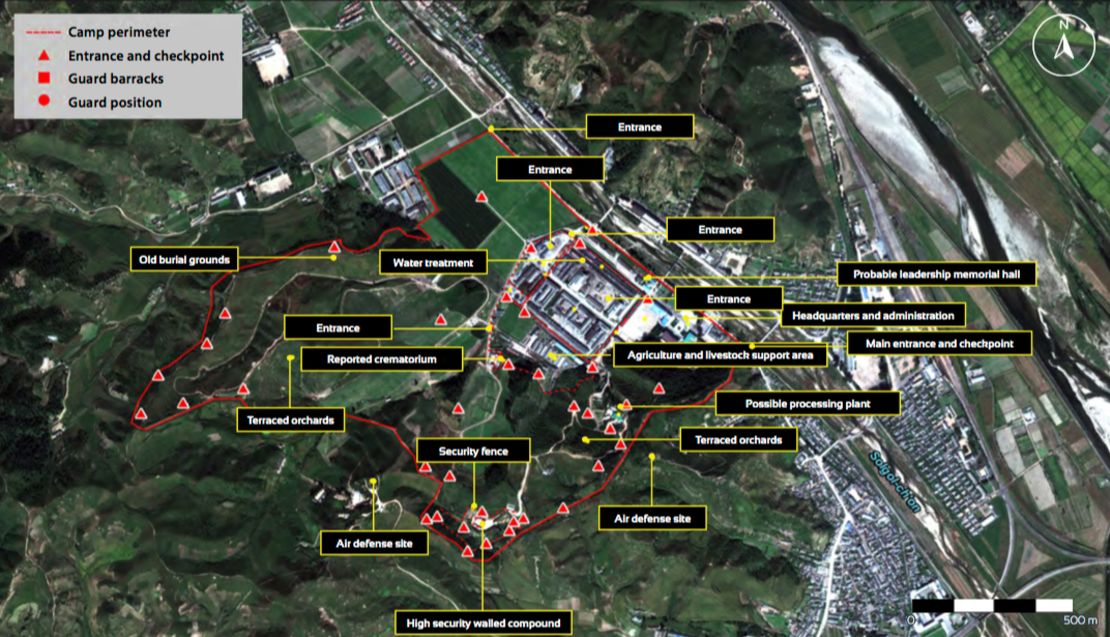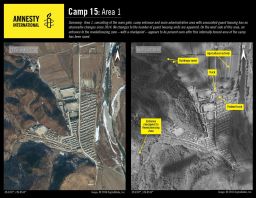Story highlights
More than 120,000 people are imprisoned in North Korea's gulag system
New satellite images show the camps may be expanding
Newly-released satellite images show that North Korea’s prison camp system, where detainees are subjected to forced labor, torture, starvation, rape and death, may be expanding.
Up to 120,000 men, women and children are imprisoned in the gulags, known as “kwanliso” in Korean, according to the United Nations.
Pyongyang officially denies that the camps exist, but multiple human rights groups have documented their ongoing operation via survivor testimony and satellite imagery.
READ MORE: Kim’s former bodyguard tells of beatings, starvation in North Korean prison camp

New images
On Tuesday, Washington-based Human Rights in North Korea (HRNK) released images of Camp No. 25, a camp near Chongjin, on North Korea’s northeast coast.
According to HRNK, the map underwent an expansion before 2010, when it almost doubled in scale, and has continued to operate at its larger size.

“Our satellite imagery analysis of Camp No. 25 and other such unlawful detention facilities appears to confirm the sustained, if not increased importance of the use of forced labor under Kim Jong-un,” HRNK executive director Greg Scarlatoiu said in a statement.
HRNK’s report comes after separate analysis by Amnesty International this month concluded that Pyongyang “is continuing to maintain, and even invest, in these repressive facilities.”
“These camps constitute the cornerstone of the country’s large infrastructure dedicated to political repression and social control that enables widespread and systematic human rights abuses,” Amnesty said in a statement.
“Assessments of the satellite images of two political prison camps – known as kwanliso – collected in May and August show the addition of new guard posts, upgrading of a reported crematorium, and ongoing agricultural activities.”

READ MORE: ‘I was born in a North Korean prison camp’
Horrific abuses
The 2014 UN report estimated that “hundreds of thousands of political prisoners” have died in the North Korean gulags over the past 50 years amid “unspeakable atrocities.”
“The inmate population has been gradually eliminated through deliberate starvation, forced labor, executions, torture, rape and the denial of reproductive rights,” the report said, drawing a parallel between the camps and those of Nazi Germany and the Soviet Union.

A former bodyguard of North Korean dictator Kim Jong-il told CNN in 2014 of beatings and forced starvation in the camp he was imprisoned in after he unsuccessfully tried to flee to South Korea.




